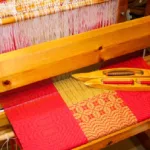
There appears to be a race among various states in the country for attracting new investments in various sectors including textile and clothing. Textile and clothing because these sectors are quite labour intensive and the country has a good track record of productive functioning of SMEs in these sectors. In this respect, the intensity with which the Gujarat Model of arranging Vibrant Gujarat type events can be seen in almost every state from Chhattisgarh to Karnataka. The number of MoUs and their total project cost are the main indicators of the success of these events. The first and foremost step being taken by states is to announce a new policy document for the industry.
The latest is the case of the New Textile Policy 2018-23 by the Maharashtra government under which a long list of incentives and concessions have been announced to attract fresh investment in the textile sector. Gujarat had already announced the new textile policy followed by a mega event Textile India 2017 which was held in July last year. The event was inaugurated by Prime Minister Shri Narendra Modi and was participated by who’s who of the Indian textile industry. A large number of guests and delegates from overseas also attended. Most trade associations merged their annual event with the Textile India 2017 to make it a huge success.
Inspired by Shri Narendra Modi, chief ministers of states like Madhya Pradesh, Chhattisgarh, Telangana, Andhra Pradesh, Uttar Pradesh, Haryana, Maharashtra and others have intensified their efforts to sign maximum number of MoUs. For this, they have held various national and global investment summits, undertaken visits abroad, to sell their respective state as an ideal investment destination. Most states have their own Textile Policy and this has created an environment of competition among them for attracting the new investment.
Although no study is available to gauge the effectiveness of these policies and the benefits they provide to entrepreneurs in the decentralized sector, there is a feeling among small players that bulk of the benefits provided in these policies are going to big corporate level enterprises who have the resources and network to examine the policy documents and present their projects in the required fashion to make them eligible for those benefits. The big players can afford costly consultants who have the ready network to get the work done. It’s like in the judiciary where big and resourceful people get away with their unfair practices by employing reputed lawyers who are well versed with the loophole in the system.
The single owner units having, no professional backing, are unable to make use of these government policies due to the complex policy wordings, as well as vague terms and conditions. They lack awareness and resources to seek these policy benefits. If the government sincerely desires that small sector units, who are the backbone of the industry, should prosper and progress then it should come out with a simple, brief and clear policy documents with very few ifs and buts. The Centre is expected to come out with the new national level Textile Policy very shortly. Let the government simplify the policy document and consolidate various incentives in such a way that even a layman can understand it. Let the policy document be compressed to just 10 pages. Hope you get it!
G.D. JASUJA
Managing Editor





